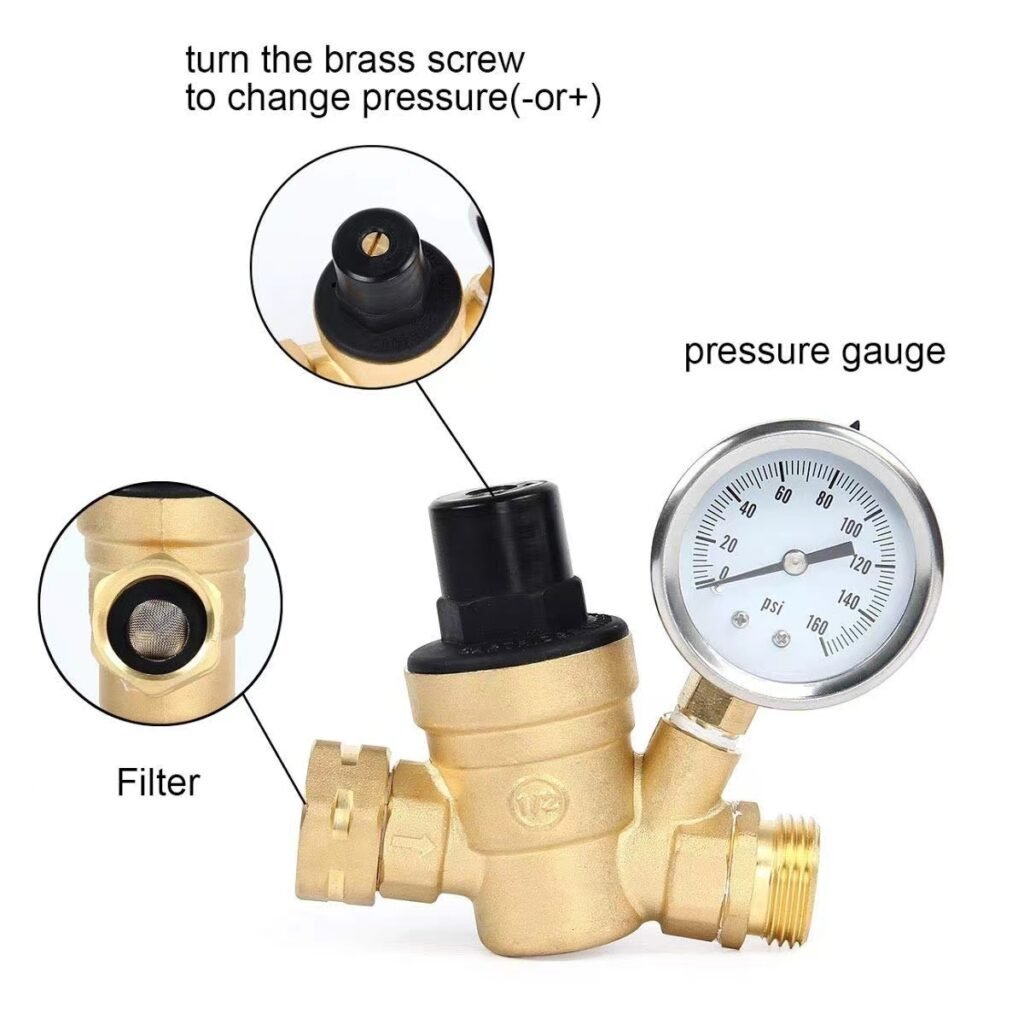Experiencing fluctuating water pressure in your home or business can be more than just a minor inconvenience. It can lead to major problems, like burst pipes, leaking fixtures, and inconsistent water temperature. These issues can cause discomfort and result in huge repair bills. A water pressure regulator helps to maintain a consistent water pressure, protecting your plumbing system and ensuring a steady, reliable water flow.
Water pressure regulators are essential components of both residential and commercial plumbing systems. They manage the water pressure that flows from the main water line to keep it from reaching dangerously high levels. By controlling the pressure, these regulators help protect the longevity of plumbing systems and contribute to efficient water usage.
This guide will explain the functionality of water pressure regulators, and we will discuss their importance, settings, types, and maintenance. By understanding these things, you can be sure that your plumbing system operates efficiently and remains in great condition.

What psi should a water pressure regulator be set at?
Setting the correct psi for a water pressure regulator is essential for the best performance of your plumbing system. The ideal psi settings typically range from 45 to 60 psi, which is ideal for most household and commercial plumbing systems. These settings help to prevent undue stress on plumbing fixtures and appliances from too much pressure, while ensuring that there is enough pressure for effective water usage. It’s important to adjust the regulator based on the specific requirements and conditions of your water system. This includes factors like the height of the building and local water pressure standards.
What are the 5 various types of pressure regulators?
Different applications and plumbing systems require specific types of water pressure regulators. Understanding the various types available can help in selecting the right one for your needs:
- 1. Direct-acting regulators: These are compact and commonly used in residential settings. They operate directly through the force of the spring and diaphragm to control the valve.
- 2. Pilot-operated regulators: These are suitable for high-flow and varying pressure conditions as they use a pilot valve to control the main valve, providing more precise control.
- 3. Self-operated regulators: These regulators do not require external energy sources to operate, making them suitable for remote and small-scale applications.
- 4. Pressure reducing valves: Specifically designed to reduce the incoming water pressure to a safer, manageable level, these are essential in commercial buildings where high water pressure from the main supply needs to be controlled.
- 5. Backpressure regulators: Unlike other types, these are used to maintain a set pressure upstream of the regulator by releasing excess pressure downstream.
Each type of regulator has its own set of applications, and the choice depends on specific requirements such as flow rate, system size, and pressure settings.
How do I adjust a water pressure regulator?
Adjusting a water pressure regulator is crucial to ensuring that it provides the right pressure for your plumbing system. To adjust the regulator, you first need to locate it. Typically, this is where the main water line enters the building. Once you locate the regulator, follow these steps:
- 1. Loosen the locknut: This is typically found on the adjustment screw.
- 2. Adjust the screw: Turn the adjustment screw clockwise to increase the pressure, or counterclockwise to decrease it.
- 3. Monitor the adjustment: Use a pressure gauge to monitor the pressure as you adjust. Make sure to adjust slowly and check frequently to avoid over-adjusting.
- 4. Tighten the locknut: Once the desired pressure is achieved, tighten the locknut to secure the settings.
Regular adjustments might be necessary based on changes in incoming water pressure or wear and tear on the regulator components.
How do I choose a water pressure regulator?
Choosing the right water pressure regulator is essential for effective water pressure management. Here are key considerations when choosing a water pressure regulator:
- Size and compatibility: Make sure the regulator is compatible with the size and type of your plumbing system.
- Material durability: Choose a regulator made from materials that can withstand the specific conditions of your water system, such as corrosion or high mineral content.
- Type of regulator: Based on the complexity and requirements of your system, choose from direct-acting, pilot-operated, self-operated, or other types.
- Adjustability and maintenance: Consider whether the regulator allows for easy adjustments and maintenance, which can be crucial for long-term performance.
- Certifications: Opt for regulators that meet industry standards and certifications, ensuring they are tested for safety and efficiency.
Understanding these factors can help you choose a water pressure regulator that not only fits your needs but also offers durability and reliability.
What is the best pressure for house water?
The ideal water pressure for most residential homes is between 45 to 60 psi. This provides enough pressure to ensure water reaches all areas of your home, but it is low enough to prevent undue stress on your plumbing system. If the water pressure is too low, you may experience poor performance from appliances and unsatisfactory water delivery through faucets and showers. If the water pressure is too high, it can cause premature wear and potential damage to pipes and appliances.
How to reduce water pressure in a house?
The best way to reduce water pressure in a house is to install a pressure reducing valve. This valve automatically adjusts the pressure from the main water supply to a pre-set level that is suitable for your home’s plumbing system. It is important to install the valve properly and to regularly maintain it to ensure that it works efficiently. Regular checks and adjustments may be necessary to accommodate changes in the main supply pressure or to compensate for wear and tear over time.
In summary, water pressure regulators are essential components of any plumbing system. They help maintain the pressure required to protect your infrastructure and to ensure that water-dependent appliances work efficiently. By selecting the right type, setting it correctly, and maintaining it regularly, you can extend the life of your plumbing system and enhance your water usage efficiency.
